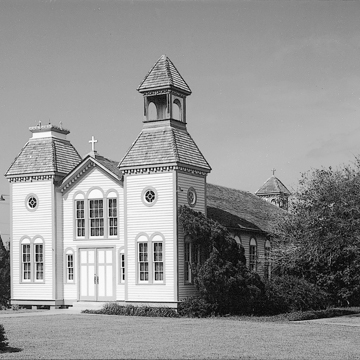Founded in 1908, Violet was one of several communities in the coastal zone settled by Catholic farmers of German descent. A much-revered vestige of this settlement, St. Anthony's has experienced several relocations and rehabilitations since its original construction. First built in 1910 as a front-gabled, towerless church with board-and-batten siding, the building underwent a complete metamorphosis in 1919, reflecting the success and growth of the community. Enlarged to its back and to its front, with towers added to each side, the new nave was sheathed in horizontal cypress siding and dressed in the Romanesque style by local farm workers, with the participation of one professional carpenter.
When a new church was built in 1952, Old St. Anthony's was moved to nearby Clark-wood to serve as its parish church. By 1975, when the historic building was outgrown yet again, St. Anthony's moved back to a site a mere two hundred feet from its first location. Third-generation descendants of the church's original builders rehabilitated it to its 1919 appearance and colors. Today, the church, with its historic statuary and furnishings, serves as a local history museum managed by the Violet Historical Society.















